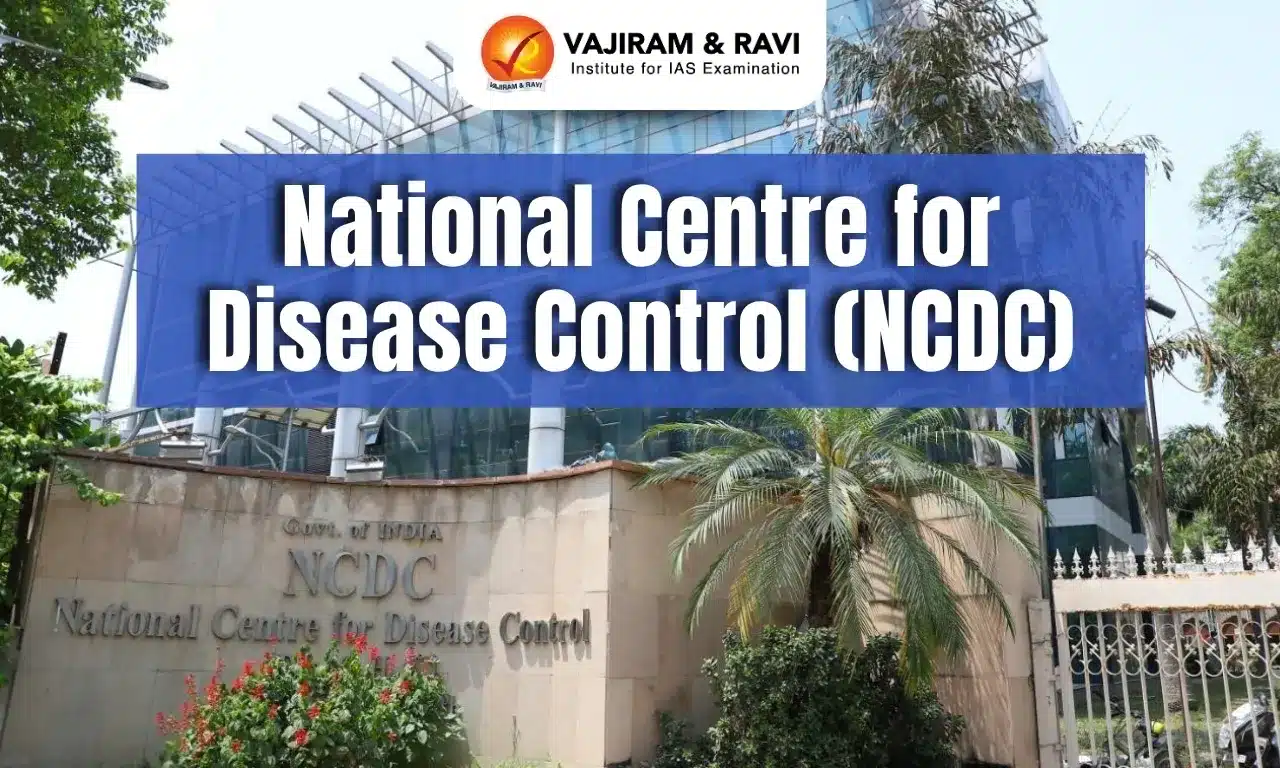National Centre for Disease Control Latest News
The National Centre for Disease Control (NCDC) recently issued several guidelines to combat illnesses arising out of water contamination.
About National Centre for Disease Control
- It is an institute under the Indian Directorate General of Health Services, Ministry of Health and Family Welfare.
- The institute was established to function as a national centre of excellence for control of communicable diseases.
- The Director, an officer of the Public Health sub-cadre of Central Health Service, is the administrative and technical head of the Institute.
- Headquarters: New Delhi.
- Besides the headquarters in Delhi, NCDC has 8 branches located at Alwar (Rajasthan), Bengaluru (Karnataka), Kozhikode (Kerala), Coonoor (Tamil Nadu), Jagdalpur (Chhattisgarh), Patna (Bihar), Rajahmundry (Andhra Pradesh), and Varanasi (Uttar Pradesh).
National Centre for Disease Control History
- NCDC, formerly the National Institute of Communicable Diseases (NICD), had its origin as the Central Malaria Bureau, established at Kasauli (Himachal Pradesh) in 1909, and following expansion, was renamed in 1927 as the Malaria Survey of India.
- The organization was shifted to Delhi in 1938 and called as the Malaria Institute of India (MII).
- In view of the drastic reduction achieved in the incidence of malaria under National Malaria Eradication Programme (NMEP), the Government of India decided to reorganize and expand the activities of the institute to cover other communicable diseases.
- Thus, in 1963, the erstwhile MII was renamed as the National Institute of Communicable Diseases (NICD) to shoulder these additional responsibilities.
- In the year 2009, NICD transforms into National Centre for Disease Control (NCDC) with a larger mandate of controlling emerging and re-emerging diseases.
National Centre for Disease Control Functions
- It functions as the nodal agency in the country for disease surveillance facilitating prevention and control of communicable diseases.
- In coordination with the State Governments, NCDC has the capacity and capability for disease surveillance, outbreak investigation, and rapid response to contain and combat outbreaks.
- It also deals with Anti-Microbial Resistance (AMR), an emerging area of concern with far-reaching consequences.
- It also provides referral diagnostic support, capacity building, and technical support to States/UTs in the country.
- The mandate of the Institute broadly covers three areas viz. services, trained health manpower development, and research.
Source: ET
Last updated on December, 2025
→ Check out the latest UPSC Syllabus 2026 here.
→ Join Vajiram & Ravi’s Interview Guidance Programme for expert help to crack your final UPSC stage.
→ UPSC Mains Result 2025 is now out.
→ UPSC Notification 2026 is scheduled to be released on January 14, 2026.
→ UPSC Calendar 2026 is released on 15th May, 2025.
→ The UPSC Vacancy 2025 were released 1129, out of which 979 were for UPSC CSE and remaining 150 are for UPSC IFoS.
→ UPSC Prelims 2026 will be conducted on 24th May, 2026 & UPSC Mains 2026 will be conducted on 21st August 2026.
→ The UPSC Selection Process is of 3 stages-Prelims, Mains and Interview.
→ UPSC Result 2024 is released with latest UPSC Marksheet 2024. Check Now!
→ UPSC Prelims Result 2025 is out now for the CSE held on 25 May 2025.
→ UPSC Toppers List 2024 is released now. Shakti Dubey is UPSC AIR 1 2024 Topper.
→ UPSC Prelims Question Paper 2025 and Unofficial Prelims Answer Key 2025 are available now.
→ UPSC Mains Question Paper 2025 is out for Essay, GS 1, 2, 3 & GS 4.
→ UPSC Mains Indian Language Question Paper 2025 is now out.
→ UPSC Mains Optional Question Paper 2025 is now out.
→ Also check Best IAS Coaching in Delhi
National Centre for Disease Control FAQs
Q1. The National Centre for Disease Control (NCDC) functions under which Ministry of the Government of India?+
Q2. Where is the headquarters of the National Centre for Disease Control (NCDC) located?+
Tags: national centre for disease control prelims pointers upsc current affairs upsc prelims current affairs

















